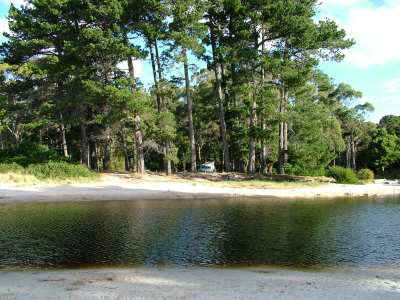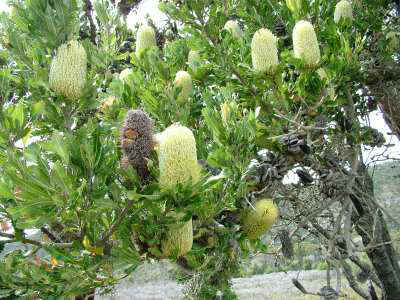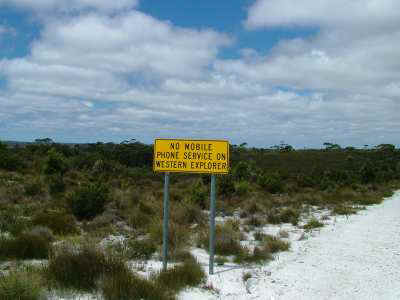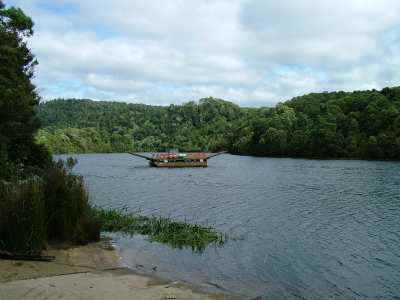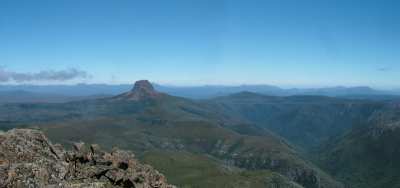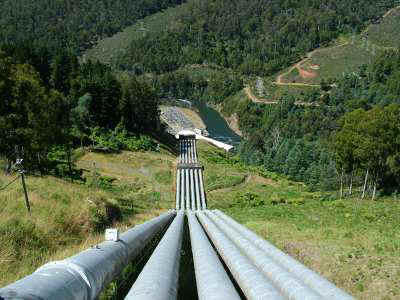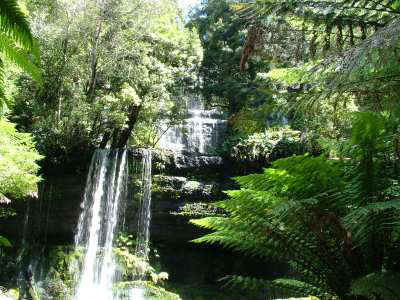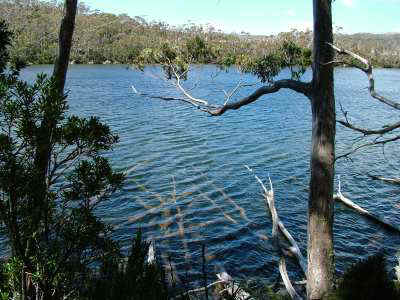| Home | |
The newest Volkswagen models are widespread in Tasmania.
Just like the Kiwis, the Tasmanians are very friendly towards aliens like us. Many people
we talk to, wonder why we have to go back home after such a far journey, and ask if we
wouldn't want to stay in Tassie forever.
Beautiful campspot at sisters beach. A whole herd of kids surrounds us and they ask all sorts of questions. They ask how many people there are living in the city we are coming from. We say, we are currently living in a small town only three times the size of Burnie. The oldest of the girls answers "Oh my goodness".
One of the biggest advantages of free trade in an infinite universe is, that most items do not need to be manufactures any more, because somewhere there will be a planet where they simply grow on a tree. A good example for this is the the common toilet brush tree (banksia loobrushiensis) which is found in Tasmania and parts of the Australian continent.
No, we didn't take intoxicating substances, before writing the previous paragraph. It is intended to be an homage to Douglas Adams, the author of "The hitchhikers guide to the galaxy", who died last year far too early. Fields with poppy seeds are seen all over the north western part of Tassie in January.
Tree ferns on the way to the Big Tree.
A quiet full moon night at the Green Point beach near Marrawah. Because of the enormous surf which is often found her, the Australian Surf championships have been held here.
From the soft sanded beaches back to the road. The local petrol pump attendant increases our tire pressure. BTW many thanks to Allrad-Christ the compressor is a real good one.
The sign should rather say "No service at all, on western explorer". Coming from the north, the landscape is similar to the Hardangervidda in Norway but then changes to temperate climate rain forest similar to parts of the south island of New Zealand.
Unfortunately irony and humor are unknown in many parts of the world. For this reason, signs like this one found at the Corinna ferry sometimes cause misunderstandings. In the evening we saw a vehicle driving up and down the car park. Finally they stopped next to us and said: "so there's no bridge, what do we have to do now?" They've been from Germany of course.
The ferry across the Pieman River.
The Pademelon is the smaller one of the two Wallaby species found in Tasmania. It weighs up to 7 kilograms. This one came to our campsite at Cradle Mountain. So we've been quite happy already when an hour later our daughter suddenly came up to me and said: Dad, there's a "wooh-wooh-wooh"!
She was to excited to remember it's name, but really there it was a Tassie Devil. A rather young one maybe about 25cm long. Unfortunately the devils are seriously threatened by Extinction, because of a mysterious face tumor more and more of them are developing. The Devils love carrion, and some scientists think the cause of the cancer is devils feeding on dead wallabies that where poisoned by forestry companies, to keep their population down. Another example for environmental interference not doing any good.
After that, I just wanted to go to the campground office, to check what time it is opening on the morning, when this bloke turned up. A huge Wombat was crossing the path slowly but steadily.
Climbing cradle mountain, the path leads through rain orest at first ...
... but requires almost a bit of rock climbing when coming closer to the summit.
The views from the top are mind boggling though. In the distance Mt. Emmett.
On the descent, view on Dove Lake and Cradle Mountain.
Here we met Ruth and Peter from Switzerland. With their Troopie they traveled all around Oz and gave us many valuable hints. Currently they are preparing their next trip to South America. Have a look at their website www.traveljoy.ch.
View from Tarraleah to the power station. The Tassies are producing their electricity almost completely from hydropower. For nuclear power supplied central Europeans this sounds great, anyway in the 60ies and 70ies this decision actually divided the nation and led to an early "green movement". At that time, the Tassies flooded one of their two national parks at Lake Pedder to produce electricity. All the efforts to stop the project failed, but they gave a big impetus to the conservation movement. Today national parks cover 25% of Tassie 20% are declared world heritage area by the UNESCO.
The Russel Falls are the icon of the Mt. Field national park, the oldest one in Tasmania.
Lake Dobson, Mt. Field National Park.
When looking at this dense forest of eucalypts, banksia and tree ferns, it's hard to believe that a sign at the end of the path indicates the way to the ski lift. The whether actually is very variable in Tasmania.
Again we are lucky in Tasmania A Spotted Quoll is visiting our campsite at Scotts Peak Dam. This cat sized carnivore feeds on birds, small lizards and carrion. Here the only road ends leading to the south western corner of Tassie ends.

